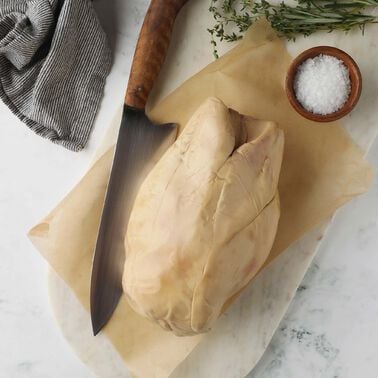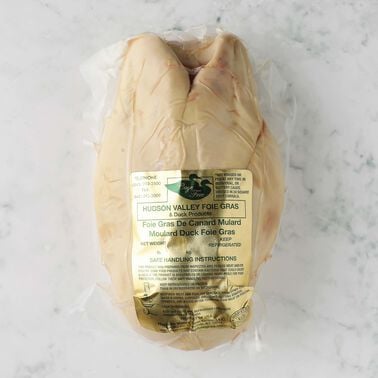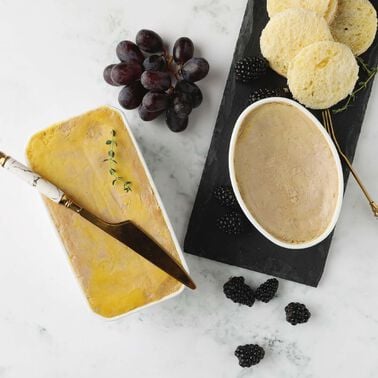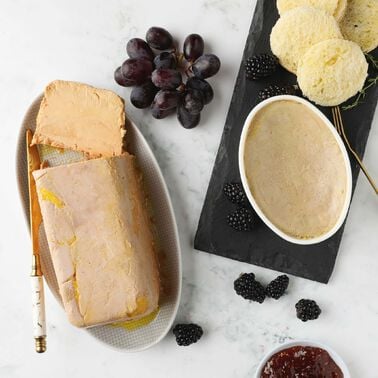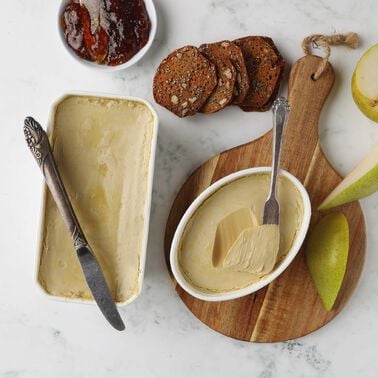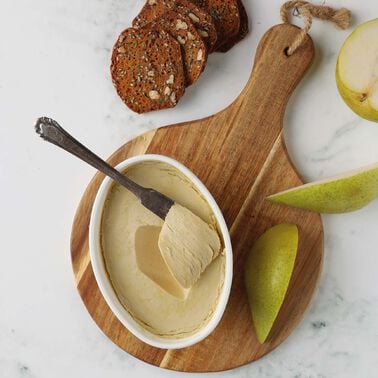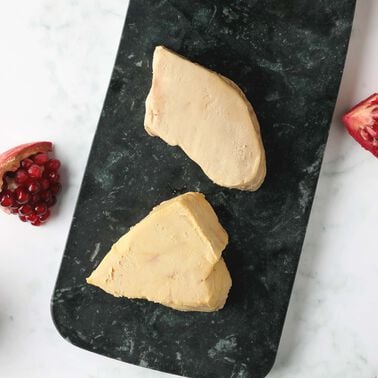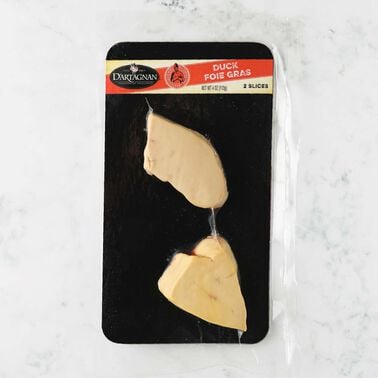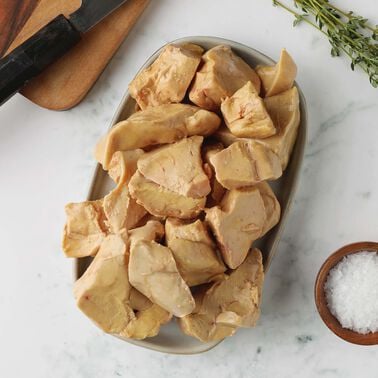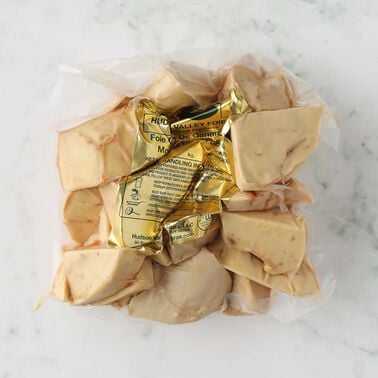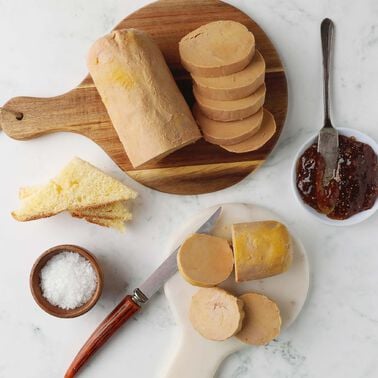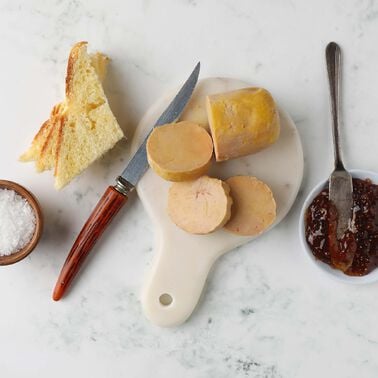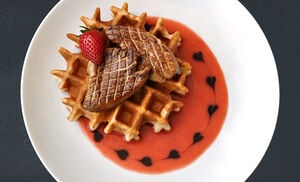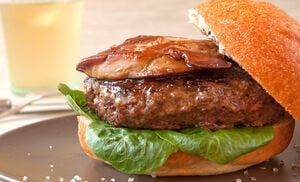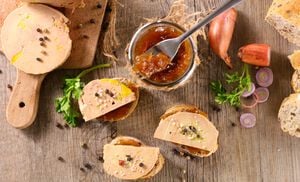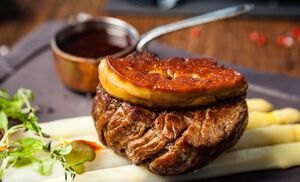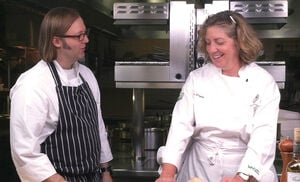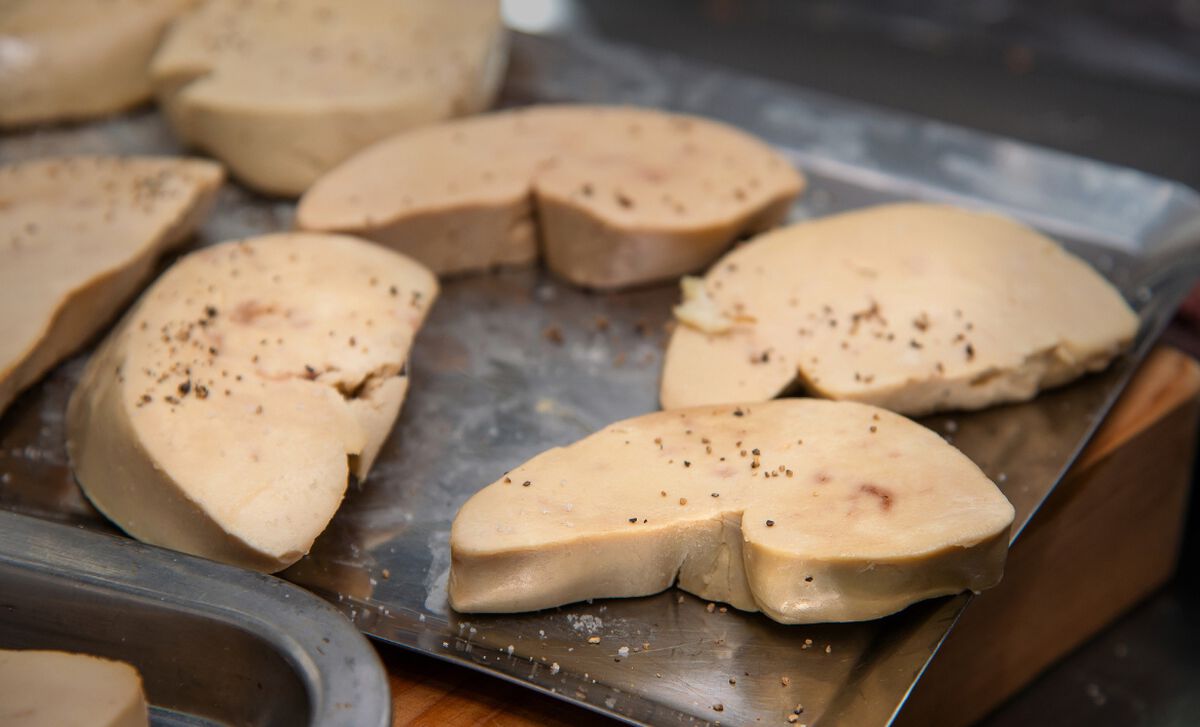
What does Foie Gras mean?
Foie gras is French for "fatty liver." Before migration, waterfowl will gorge themselves to fatten their livers, which serve as caloric gas tanks to fuel their long flights. When ducks and geese were domesticated, farmers took advantage of this natural propensity and hand-fed them to recreate the tasty liver they found in the wild birds during migration.
Different Grades of Foie Gras
Foie gras is oval in shape, and composed of two bulbous lobes, one smaller than the other, and can weigh 1.5 to 2 pounds. This pinkish, creamy-colored liver is extremely delicate and must be cooked with care since all the fat can melt away easily with high or prolonged heat.
Livers are graded for quality; "A" livers are the top grade, and largest, firm to the touch, smooth in texture, with consistent color, and no blemishes (like blood spots). Top-quality livers will be shiny and smell sweet. Chefs will use Grade "A" foie gras for simple preparations like searing and sautéing, or for a classic terrine, where the whole liver is cooked in a porcelain terrine in a water bath, then chilled and served cold, in slices.
Grade "B" foie gras is smaller in size, a little softer in texture, flatter, and will have some blood or minor surface defects, and more prominent veins than "A" livers. This grade of foie gras is just as delicious as the top-quality livers but is more often used in preparations like mousse and terrine, where the blood content will melt away in cooking. Grade "B" foie gras can also be seared, but chefs usually insist on using the firmer, more aesthetically pleasing "A" livers for this purpose.
Grade "C" is only sporadically available and pales in comparison to both "A" and "B" foie gras. Chefs use the "C" livers to flavor and thicken sauces.
Preparations of Foie Gras
Sometimes the word “pâté” is mistakenly used synonymously with "foie gras." Pâté may refer to any ground meat that is slowly cooked in a mold and is not specific to foie gras. Pâté de campagne is a country-style, coarse pate made with pork and no foie gras at all.
Terrine of foie gras, whole foie gras, and foie gras entier all refer to the whole liver, deveined, cleaned, and cooked. Plain and simple, these are the purest forms of prepared foie gras. Basic ingredients such as salt, pepper, and a bit of Sauternes wine are all that is needed to create these recipes. Torchon is another pure foie gras preparation, named after the dish towel in which pieces of raw foie gras are wrapped before being poached in water, wine, or stock.
Mousse of foie gras, bloc of foie gras, puréed foie gras are less expensive ways to get that silky flavor of foie gras, because in these preparations, there is water or wine added, and the product is blended or emulsified and baked. Black truffles may be whipped into the creamy mousse for the ultimate in gilding the lily. Watch the ingredient list on these prepared products, as some manufacturers will add chicken, pork, or regular duck liver. Make sure you’re getting 100% foie gras!
Canned foie gras is hardly worth mentioning in the U.S. any longer since domestic, prepared products of high quality are widely available. But for years the only foie gras available in the U.S. was canned product imported from France, but it does not really do the liver justice. Canned foie gras must be cooked to an internal temperature of 212F degrees to be shelf-stable, and this compromises the texture and flavor.
While mousse of foie gras is very nice on a toast point, it is worth eating foie gras from the whole, fresh liver when possible. If an entire lobe is intimidating, or just more than you need, try a smaller bite of the good stuff with D’Artagnan’s convenient Grade-A Duck Foie Gras Slices, ready to be seared in a pan and dressed with a bit of fruity sauce. Alternatively, our Foie Gras Sampler offers an easy way to experience a few different preparations of foie gras. No matter which you choose ... your taste buds will certainly thank you.
